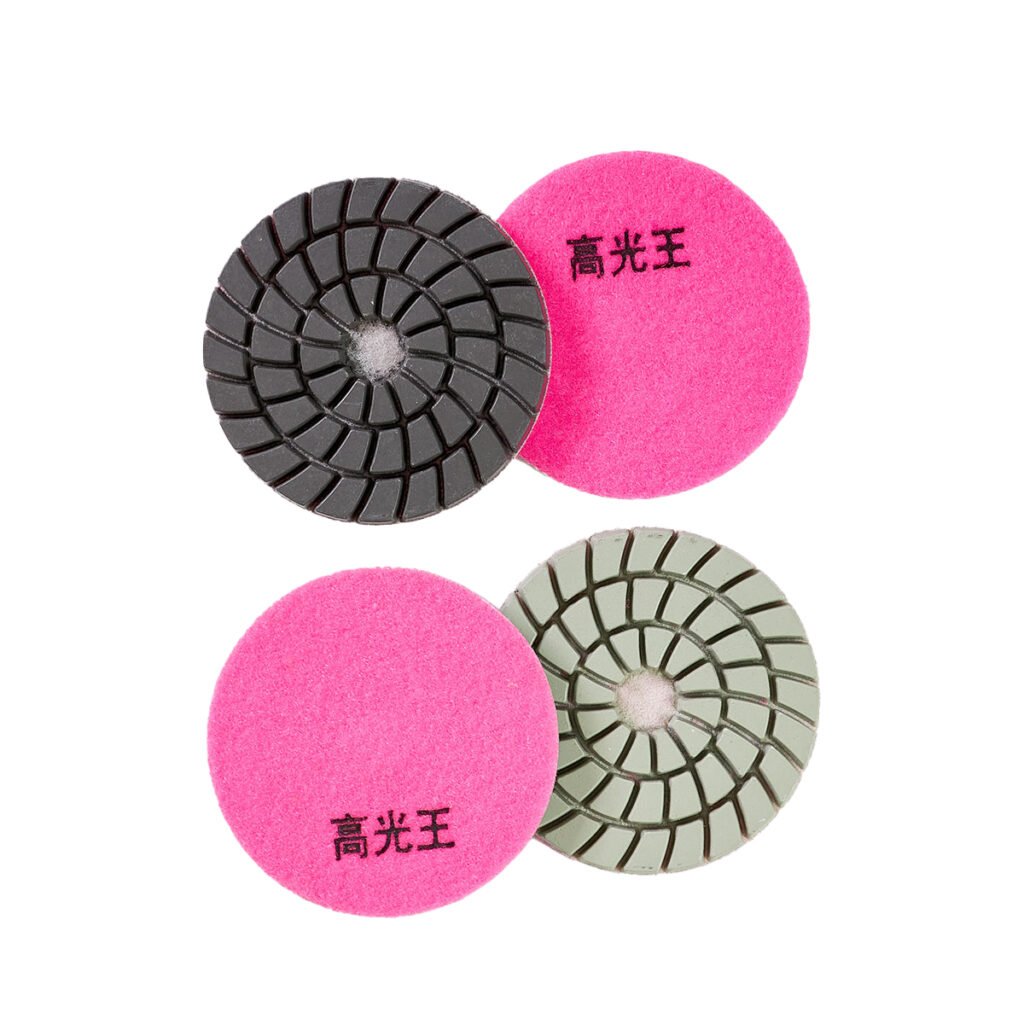The lifespan of diamond polishing pads varies based on several factors, but here’s a structured overview:
Key Factors Affecting Lifespan:
Material Hardness:
- Hard materials (e.g., granite, quartzite) wear pads faster than softer ones (e.g., marble, limestone).
Grit Level:
- Coarse grits (50-200): Used for heavy material removal; may last longer due to robust diamond segments but degrade faster if misapplied.
- Fine grits (800-3000+): Used for polishing; smaller diamonds wear quicker, especially on hard surfaces.

Usage Frequency & Pressure:
- Daily professional use shortens lifespan vs. occasional DIY use. Excessive pressure accelerates wear; proper technique (even pressure) extends life.
Machine Variables:
- High RPMs generate heat, potentially degrading the bond. Water-cooled systems or well-maintained machines enhance longevity.
Pad Quality & Bond Type:
- Resin-bonded pads: Wear faster but provide finer finishes.
- Metal-bonded pads: Durable but less refined. Higher-quality pads with even diamond distribution last longer.
Dust/Debris Management:
- Effective extraction prevents clogging and reduces friction, preserving pad life.
General Lifespan Estimates:
- Time-Based: 10–50 hours of active use, depending on factors like material and technique.
- Area Coverage: 500–2,000 sq ft, with coarser pads covering more area than finer ones.
- Project Count: 5–20 projects for occasional users, varying with project size and material.
Signs of Wear:
- Reduced cutting/polishing efficiency.
- Visible thinning or smoothness of the diamond surface.
- Uneven results or increased effort required.
Tips to Extend Lifespan:
- Match bond hardness to material (soft bonds for hard stone, hard bonds for soft stone).
- Use water cooling where applicable.
- Clean pads regularly to prevent glazing/clogging.
- Follow manufacturer guidelines for machine settings and maintenance.
Conclusion:
While diamond polishing pads can last anywhere from a few projects to dozens of hours, their longevity is highly situational. Monitoring performance and adhering to best practices will optimize their use. Always consult manufacturer specifications for precise expectations.



